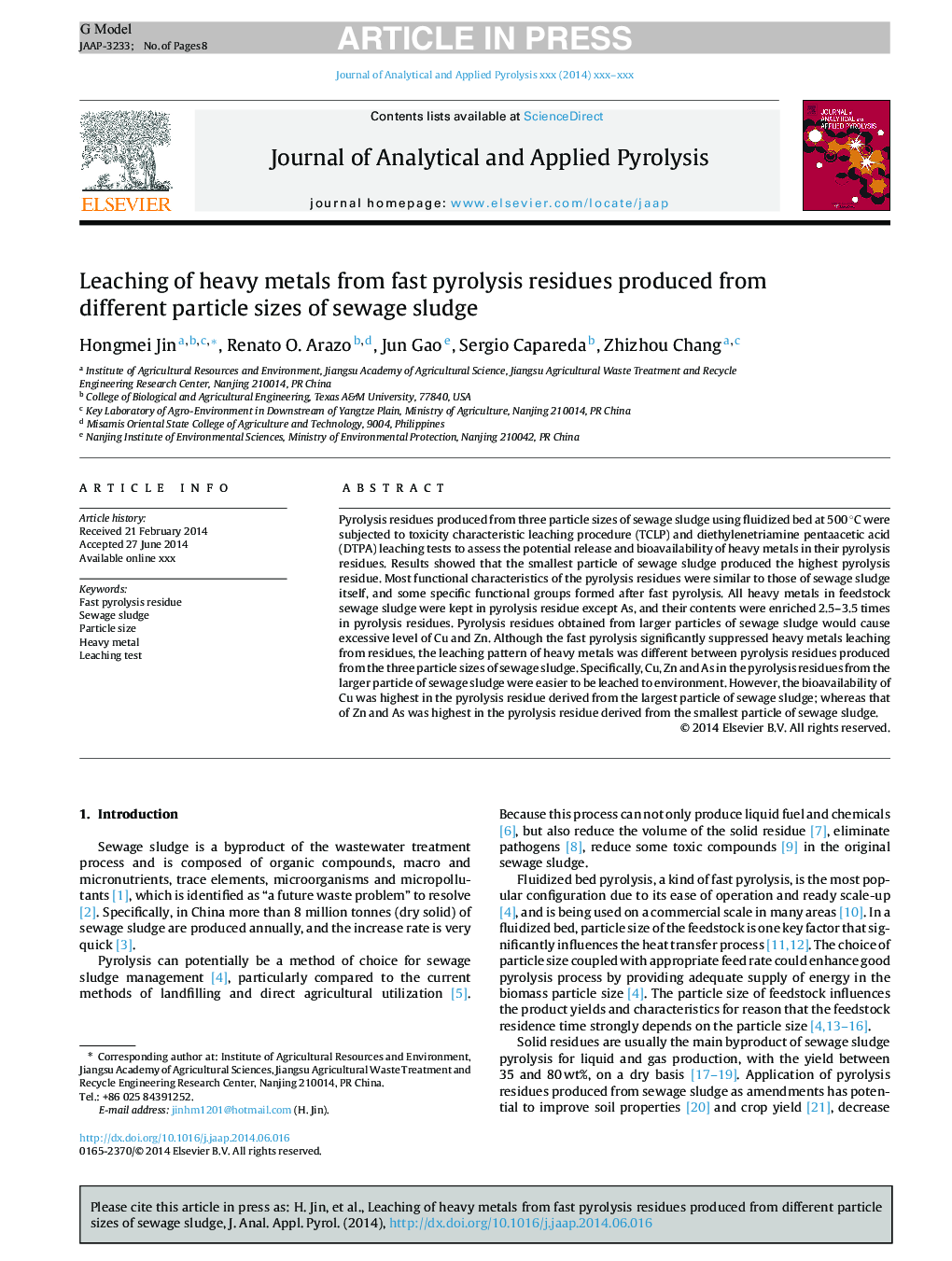| Article ID | Journal | Published Year | Pages | File Type |
|---|---|---|---|---|
| 7606908 | Journal of Analytical and Applied Pyrolysis | 2014 | 8 Pages |
Abstract
Pyrolysis residues produced from three particle sizes of sewage sludge using fluidized bed at 500 °C were subjected to toxicity characteristic leaching procedure (TCLP) and diethylenetriamine pentaacetic acid (DTPA) leaching tests to assess the potential release and bioavailability of heavy metals in their pyrolysis residues. Results showed that the smallest particle of sewage sludge produced the highest pyrolysis residue. Most functional characteristics of the pyrolysis residues were similar to those of sewage sludge itself, and some specific functional groups formed after fast pyrolysis. All heavy metals in feedstock sewage sludge were kept in pyrolysis residue except As, and their contents were enriched 2.5-3.5 times in pyrolysis residues. Pyrolysis residues obtained from larger particles of sewage sludge would cause excessive level of Cu and Zn. Although the fast pyrolysis significantly suppressed heavy metals leaching from residues, the leaching pattern of heavy metals was different between pyrolysis residues produced from the three particle sizes of sewage sludge. Specifically, Cu, Zn and As in the pyrolysis residues from the larger particle of sewage sludge were easier to be leached to environment. However, the bioavailability of Cu was highest in the pyrolysis residue derived from the largest particle of sewage sludge; whereas that of Zn and As was highest in the pyrolysis residue derived from the smallest particle of sewage sludge.
Related Topics
Physical Sciences and Engineering
Chemistry
Analytical Chemistry
Authors
Hongmei Jin, Renato O. Arazo, Jun Gao, Sergio Capareda, Zhizhou Chang,
